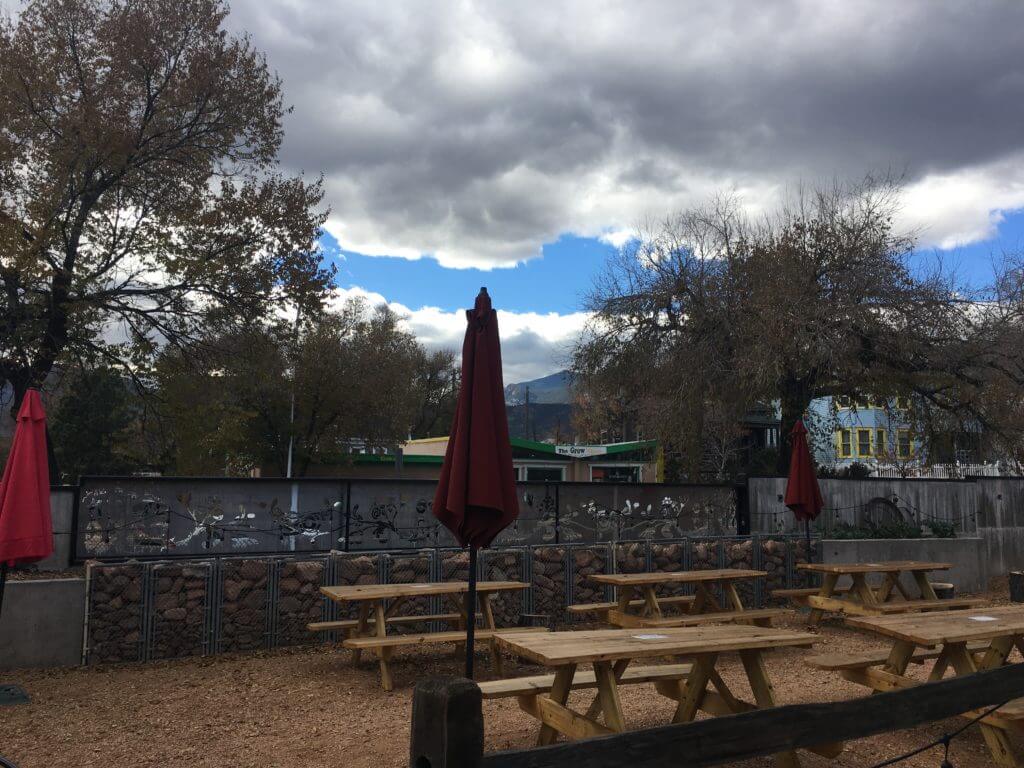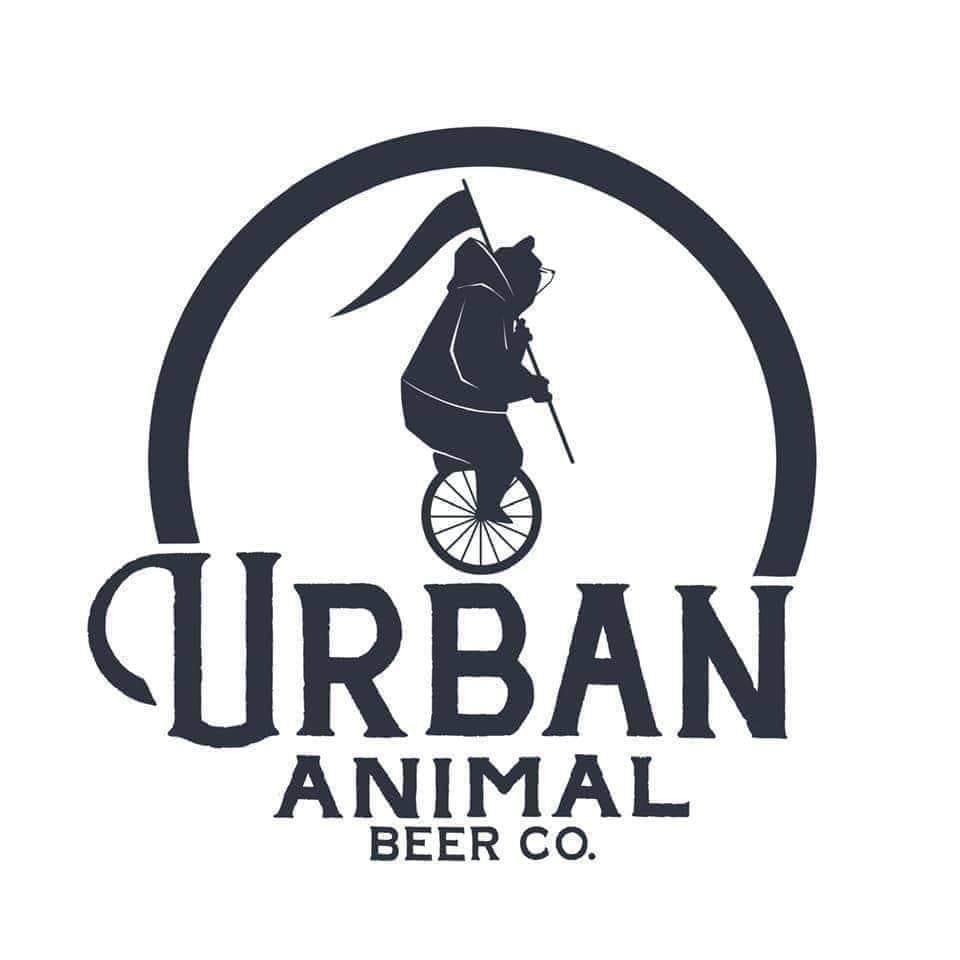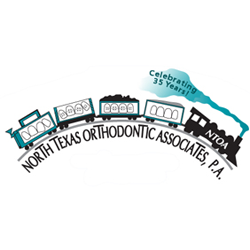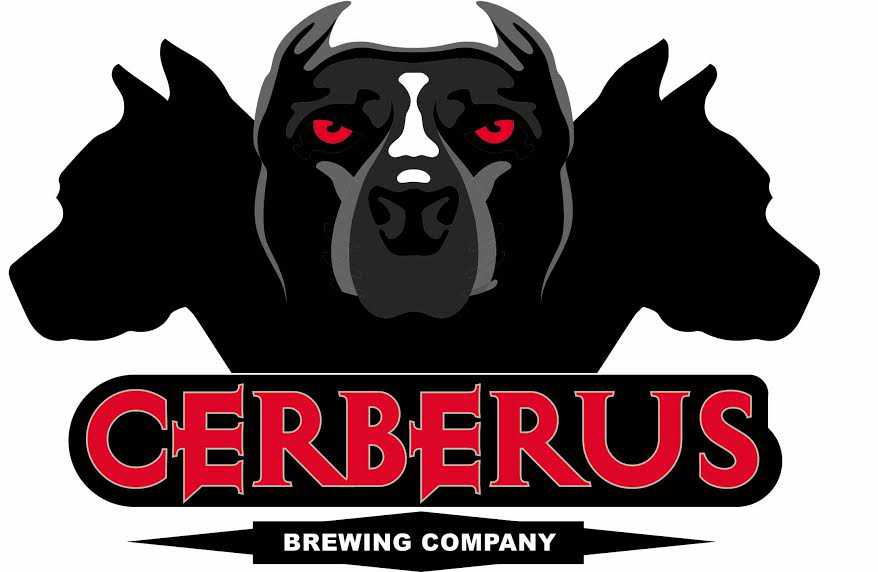All the elements of Cerberus Brewing Co. seem to have fallen into place organically. For former Brewers Republic manager and long-time home brewer Josh Adamski, taking the helm as part-owner and head brewer is just another example of assembling a top notch squad. Cerberus is creating something a little different and pushing the envelope of what we can expect from a brewpub.
“He’s always creating and making new beers,” says Cerberus executive chef Mark LeFebvre. For example, the menu is full of flagship beers spurred by demand, with a continuous rotation of small batch beers. “The way he blends is just phenomenal. You’ll get an IPA that’s not just bitter, in your face, hoppy, or just one note of floral. It builds and develops.”
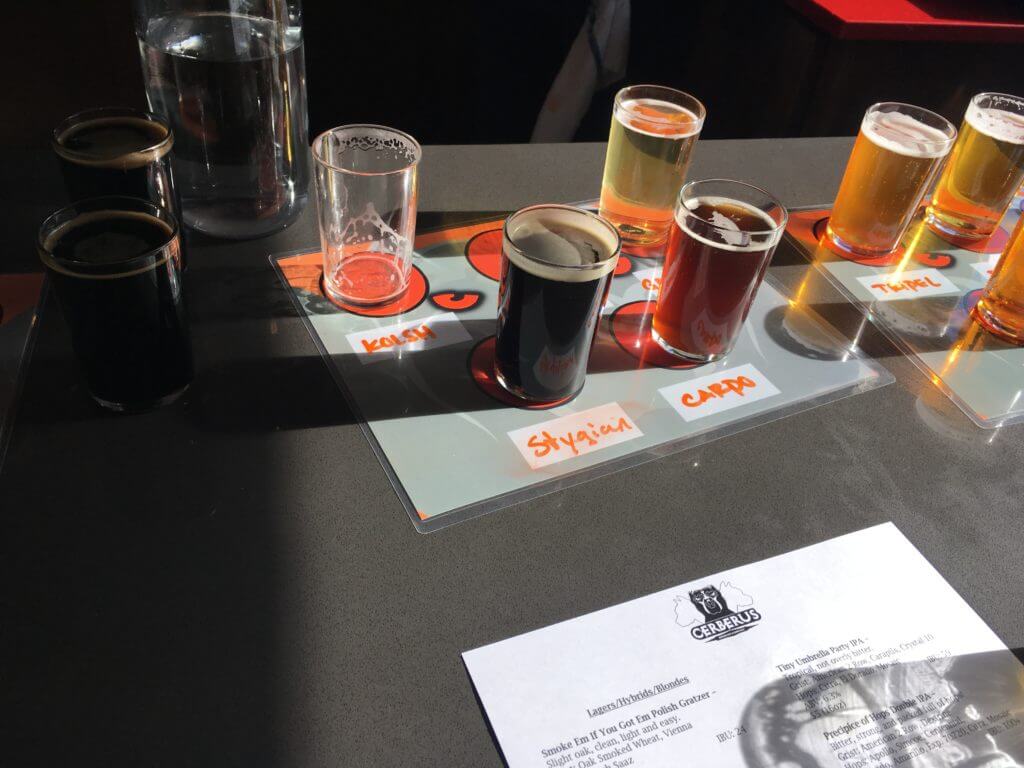
We got to sit down and chat with Adamski to find out how his background serendipitously led to Cerberus and what makes its beer so distinct.
Rocky Mountain Food Report: What’s your brewing background?
Josh Adamski: I’ve been a home brewer for about 13 years before this opened up. I wasn’t a professional brewer at all and I wasn’t brewing commercially anywhere. When Trinity opened up at Garden of the Gods I brewed there with Jason Yester. I was getting laid off after 14 years and he offered me a job but I wanted to go travel. But I kept in the brewing world and became a beer nerd and traded a lot. Through Brewers we were able to go do some guest brew days at New Belgium and Odell and see the commercial side. Then I went to school and got my biology degree. I was going to move but then the owners at Brewers, Tom Halfast and Jerry Morris, approached me with the idea for this place and we decided to do it.
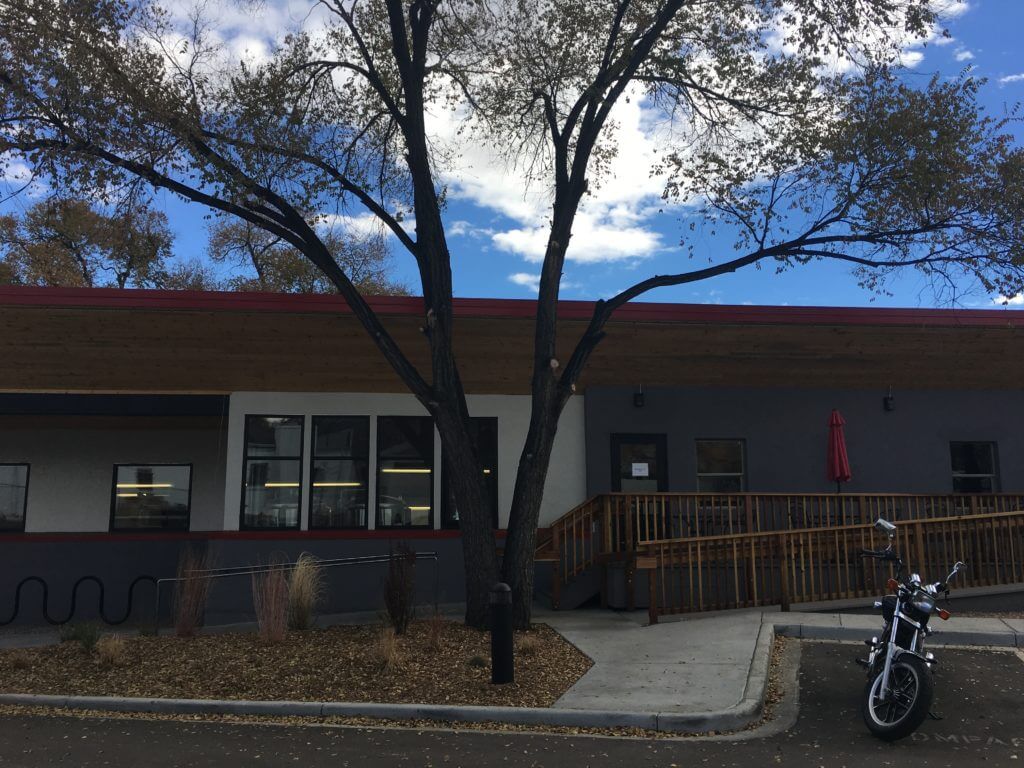
Do you focus on flagship beers or small batch beers?
We didn’t go after making anything flagship, we just kind of let it fall. The IPAs are the ones we can’t keep on tap. The Tiny Umbrella Party and Elysium, those two sell the fastest and next in line is the Kolsch. I think we’ve decided to do those three as much as we can. Right now because of the cold weather, the stout is next in line and the California Common. We don’t have a pilot system yet, we have a 10 gallon we’re trying to do one-off things, play around with certain hops, but it’s all full batches. Everything we make is in full, we might get less in the end because Elysium has 12 pounds of dry hops so it tends to soak up a lot of the wort. So we only end up with six barrels, but everything starts out as being the same size, depending on what kind of beer it is. We just kind of let everything happen based on what people like. I think Elysium and Tiny will probably be our two top sellers, what people want the most, and we will just fill in the holes.
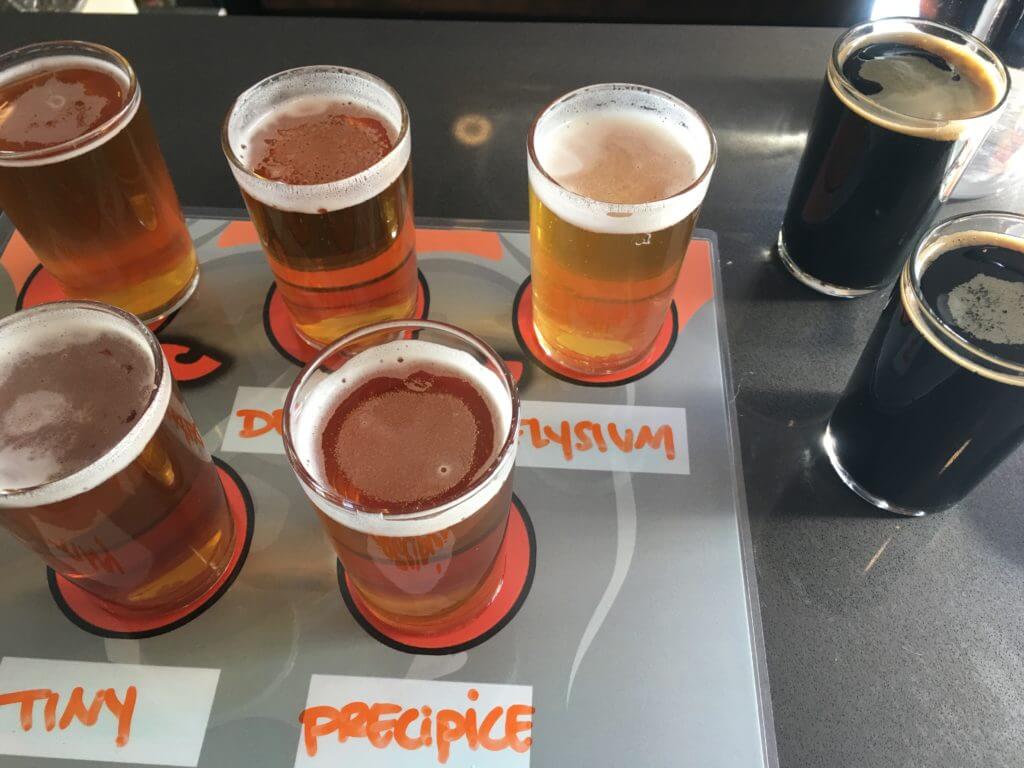
Has it been a challenge to operate on this system?
Oh yeah, but I did an internship last summer for four months with Red Leg Brewing, volunteering. I have known the owner of Red Leg, Todd Baldwin, for a couple years and I approached him with our idea and asked is it possible to just come brew for you. As soon as I met Jeff the head brewer on the first day, once they understood that I knew what I was doing it, we became buddies. I learnt everything from cleaning, fermenting, brewing, cellar part, carbonation, canning, everything.
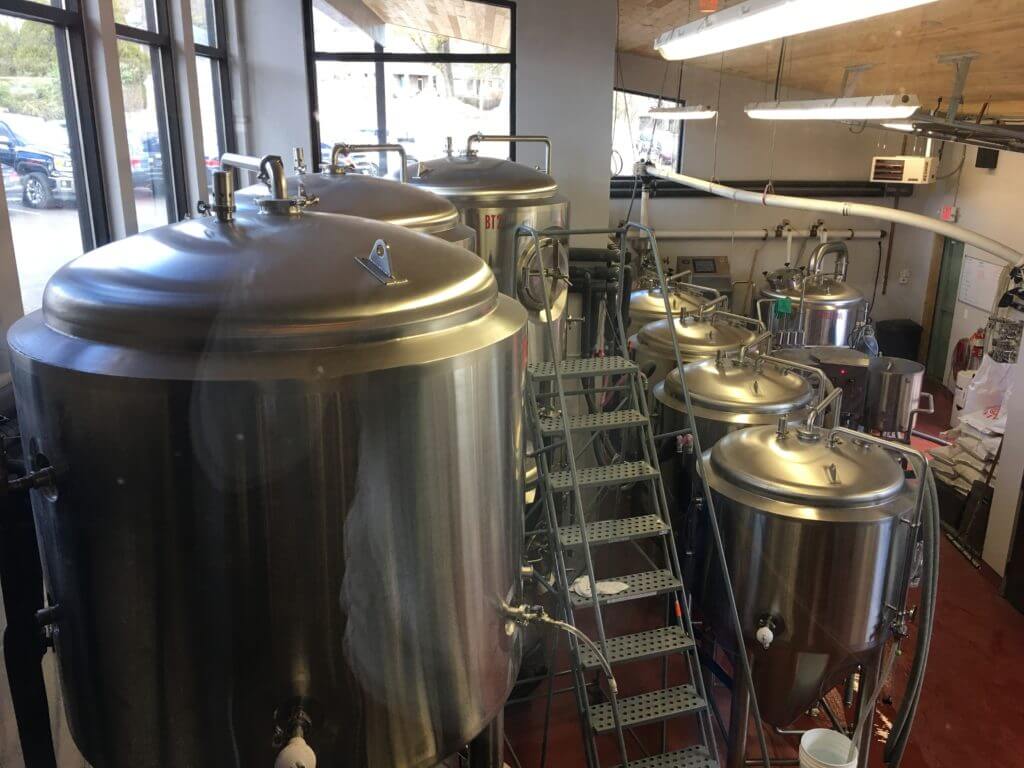
Tell us about your barrel-aging room.
The barrel system will be brand new to us. I have an assistant brewer, Taylor Donner, he used to be the beer buyer for Brewers. I hired him in order to leave and then he ended up coming over here to us because he wants to pursue a brewing career, and we’re good friends. He is a certified cicerone so he’s got the beer nerdiness, the food and beer pairings, that I don’t have. He’s learning how to write recipes and get this brew system down to a routine. He’s already started doing beer education on Tuesday nights for the staff; whether it be that we get a style of beer that compares to one of ours, or just a style of beer that we can just go over. We talk about the history of the style, what you look for when it comes to the grain bill, what hops should be used, the flavor, the aroma, he does all that. Last week we did a Kolsch that matched up. So they can see our style that we like to brew compared to a style that someone else might brew, or a style that’s being used as a foundation for that beer.
Speaking of, you have a great guest tap list. We see some Crooked Stave up there.
Oh yeah, we’ve been friends with them since they opened, since they were brewing in Funkwerks, which was years ago. The relationship kind of grew over the years at Brewers and when they found out we were moving here they loved the idea of a guest tap. Once we start getting more beers on tap, it’ll be only four or five taps. Not the seven we have now, so it’ll be a little more scaled down.
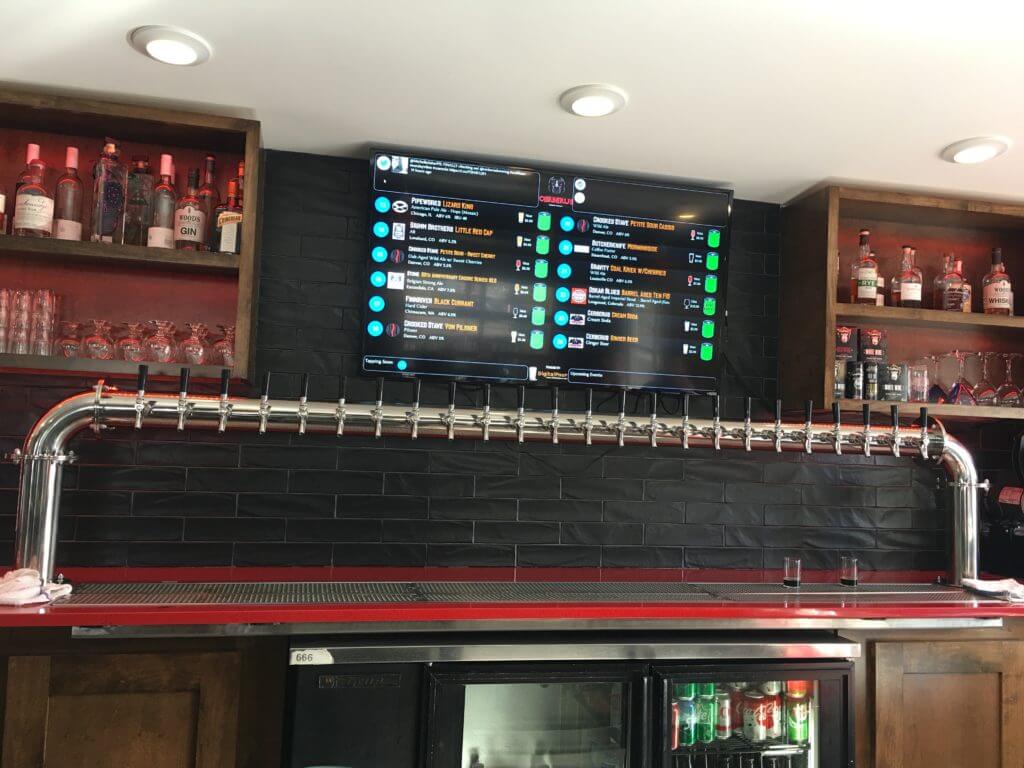
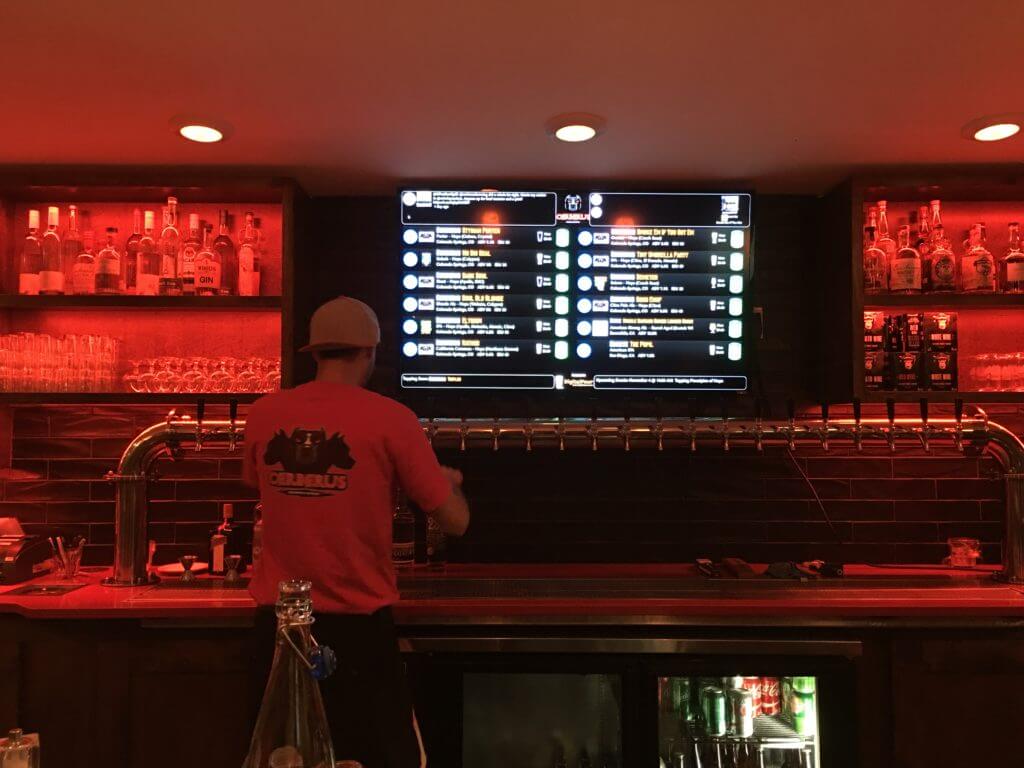
So will you establish a sour program here?
We will try to. We’re going to try to do four or five clean barrels in the brew house — clean as in no bacteria. And the barrel room, which we’re working on right now. That’ll be about 16 barrels we can have to do sours, to do fruits, whatever we want to do. We want full size, so we can do one batch and fill three barrels. Whether it be the same barrel, one’s bourbon, one’s port, et cetera, and be done.
How did you choose the name Cerberus?
JWell the partners are Tom, Jerry, myself and my mom, Cindy Geiser. We had debated, argued, about the name for about a month or so, and we all own dogs and this used to be a veterinary clinic for a long, long, long time. We were picking names that just didn’t sit well with anybody and we thought, “We can do better.” It just went the dog, pet direction and one day we just thought, what about mythological stuff and thought of Cerberus. It’s dark, which is kind of fun for me to play around with. The dog logo, that we built within a week. It all fell into place, we were all happy with it and it just kind of made sense. And also, no one had it. We were able to get it trademarked so it’s ours.
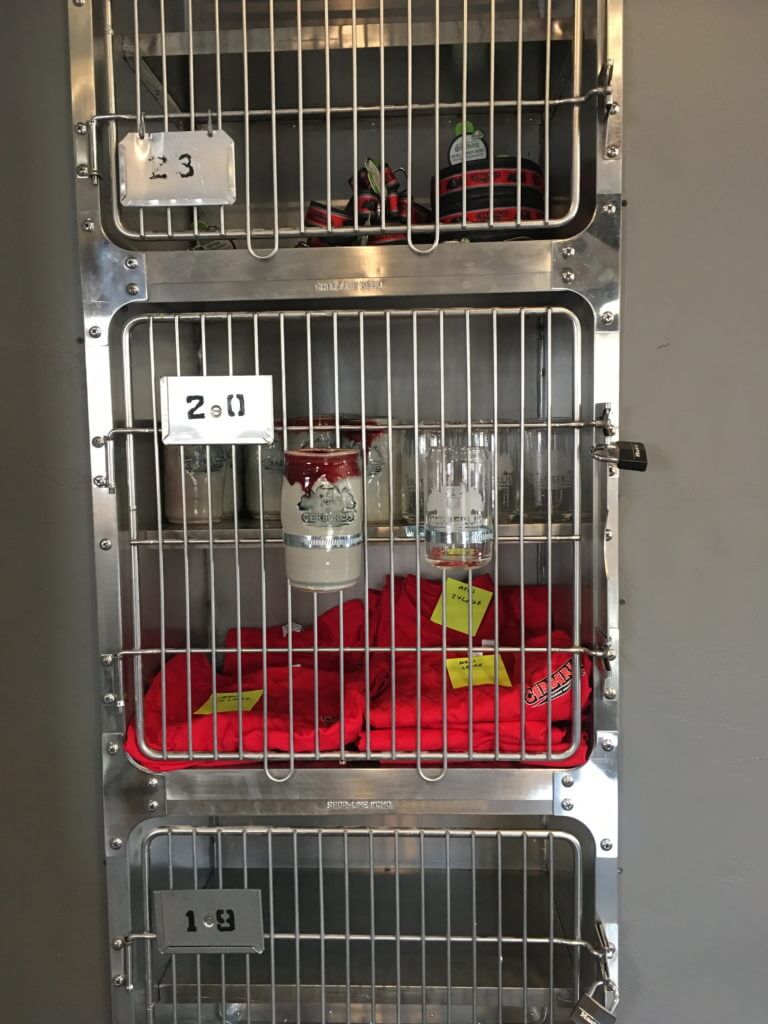
Will Cerberus be participating in the festival scene?
JWe did four festivals this year already. We did the Bruja Brew Fest in Pueblo two days before we opened so people were excited to have our beer. We did Bines & Brews Hopfest in Monument, one fresh hop beer for the contest and one fresh hop beer for us. All cascade for the festival. We did the Heritage Brew Festival in Manitou and we just did the All Colorado Festival here in Colorado Springs.
Is Great American Beer Festival on the docket for next year?
We’re going to try. It’s kind of pricey. We’ll probably just enter beers, I don’t know if we’ll go. It depends, if we’re growing well and we have the extra cash maybe we’ll try to pour but I’m not really worried about it … It’s huge. In Colorado it doesn’t seem to benefit you. We’re so small and they ask for a lot of beer. I think people coming in from out of town that make a whole weekend will come down here to see us. They can sit and spend a couple hours, have food and try all the beer. It’s fantastic but I’d rather do events. Like they did an East Coast versus West Coast IPA tapping at Falling Rock and I’d rather be a part of that.
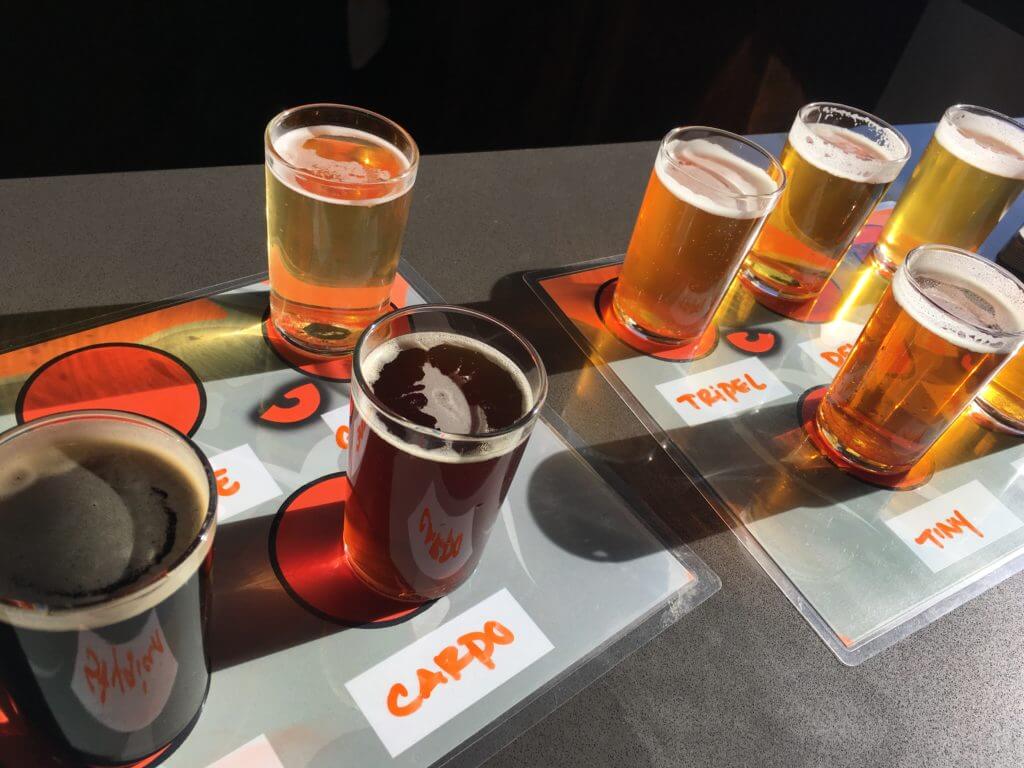
When are you planning to host your first pairing dinner?
We have already sold four. We did a campaign on Event Brite and pre-sold four eight-person dinners, four courses with me and Mark downstairs in the barrel room, whenever it’s done. So when that gets closer we’ll start scheduling those out. The way it’s looking, January will be our first one. So we’ll do those and then try to do something special later on.
“We’ll be able to up the bar a little bit,” says LeFebvre. “In the spring and summer I’m going to try to, once a month, have a Meet the Farmer dinner. That way we’ll be able to feature some of the local growers, that we’re working with, around the area, take their product, and base a menu off of that. Have them come in and join us for the dinner and talk with the guests.”
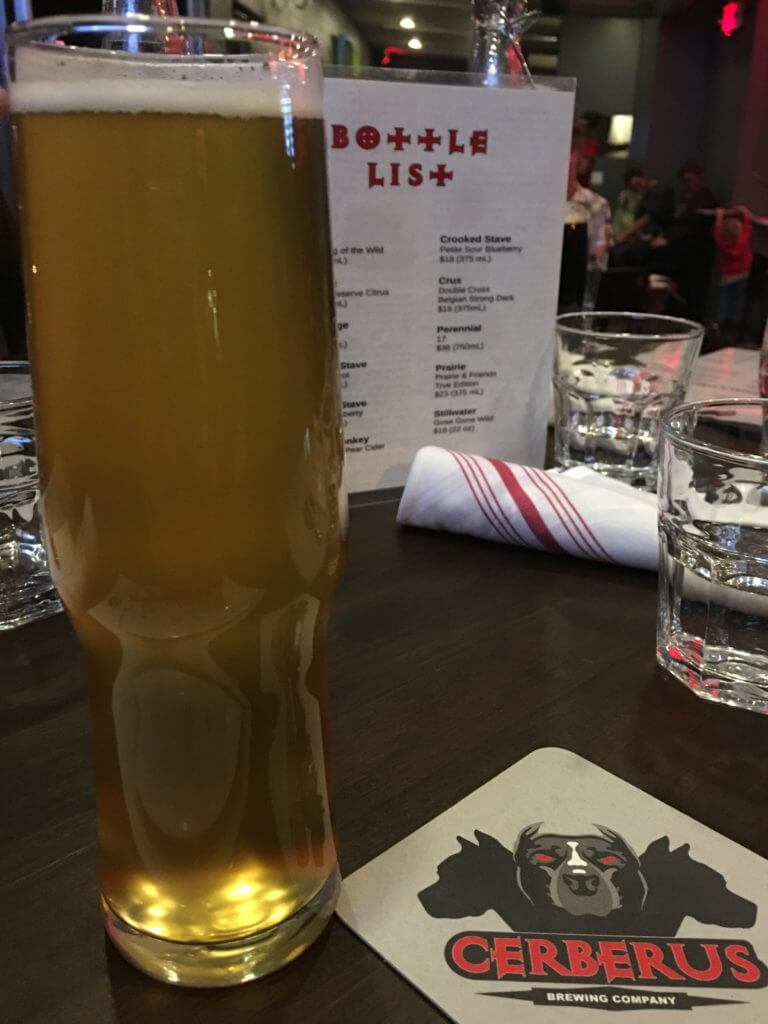
Do you feel like you have a different style of brewing compared to other Colorado Springs breweries?
Yeah, I think we’re trying to. There’s a couple breweries locally I like a lot. Trinity is at the top of my list. [Yester’s] got a great barrel program and the beers he makes are always on point, clean and nice. I wanted to make sure we make beers that we want to drink every day. Nowadays, it more about trying to use hops in different stages that’s different from the norm, to see how it works in the beer. A lot of our IPAs are late hop additions; which 10 years ago was not the case. So trying to play around with additions and where they are helps make us stand out. We use a lot of hops but we don’t use a lot of hops to make your palate fall apart. We don’t make an IPA to be bitter where you can’t taste a nice beer and we don’t make them strong enough so you can’t have another one.
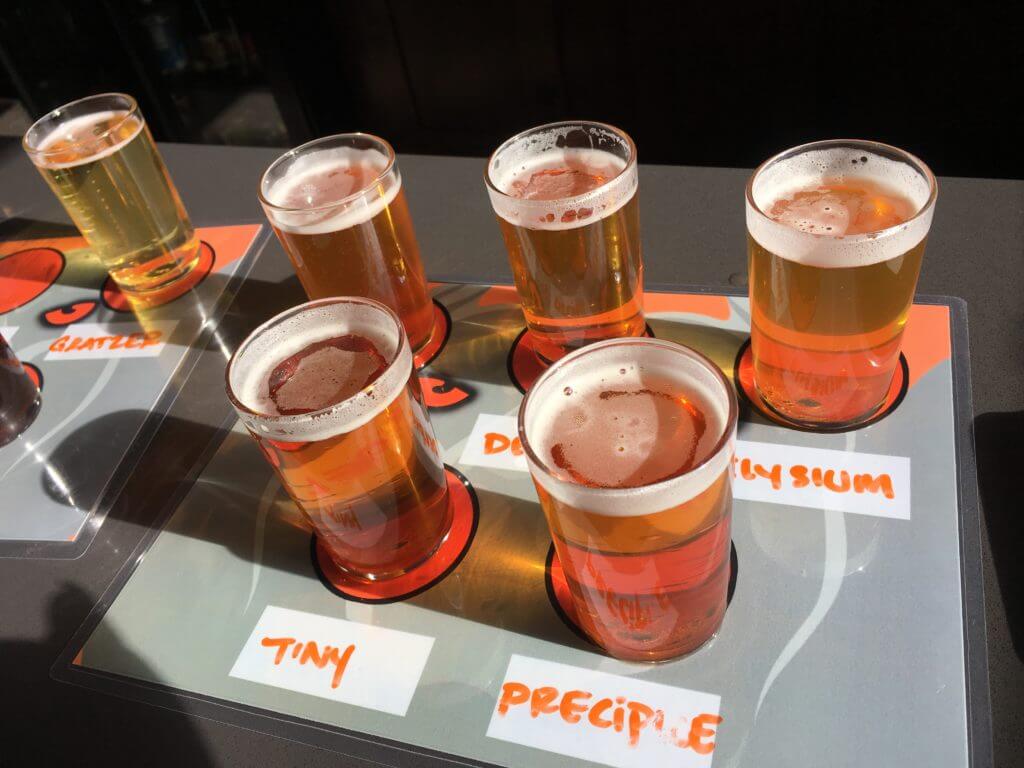
What’s the highest IBU-count beer you brew?
The Precipice of Hops Double IPA. What’s weird about double IPAs is you can calculate your IBUs from hop additions but after you’ve done the boil and fermentation, that number is gone. It’s more of a calculation later on. So you can say Precipice is around 154 IBUs on a piece of paper but in a finished beer it’s not. So we just say 100+ because people that brew know that if you put 150 on there it’s not right. So we don’t bother doing it.
Yeah, when we see over 100 IBUs we think it’s just going to be lost on us.
Exactly. It’s just when the hops were put in. Were they put in at the end or during the boil? The alpha acids and the oils just do different things at different timing. I’m not going to say something that might not be true. Our double IPAs are pretty blended and shouldn’t be a shocker to your palate. It’s more of hop blending because we’re doing so much on a late addition that’s theres not so much bittering. So when you do an addition of a hop when it first boils, that’s going to be in the beer the whole time. If you do an hour boil, a whirlpool, and a rest that’s an hour and half and then however long it takes for you to get that into the fermenter. So that could be two hours that hop has been in that beer and you’re getting all those alpha acids and oils out of there so it could be actually more bitter than what you’re indicating on your sheet. So we’re doing later additions that don’t sit in as long and also its sitting in there as the wort is cooling so you’re not pulling out as much as you would be in a first boil addition. You’re pulling out more flavor, more aroma than the bittering properties. We could make Precipice and put it all in the front and make a bitter bomb but I don’t want to drink that. That’s not a fun beer to have.
